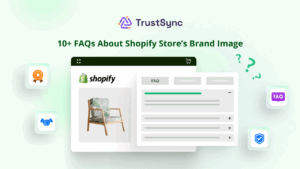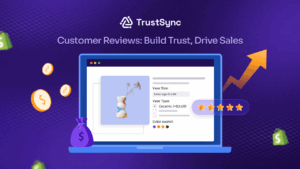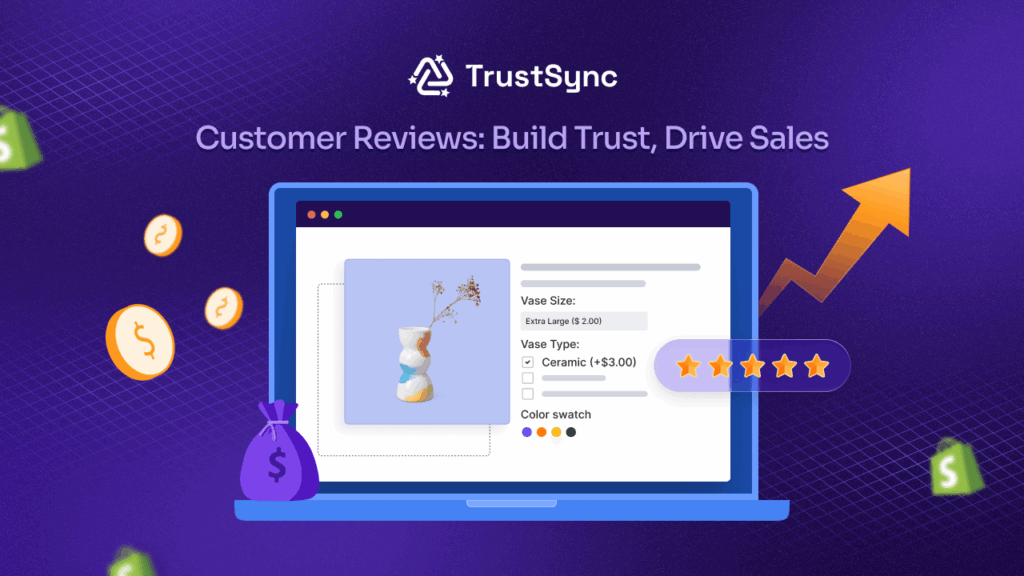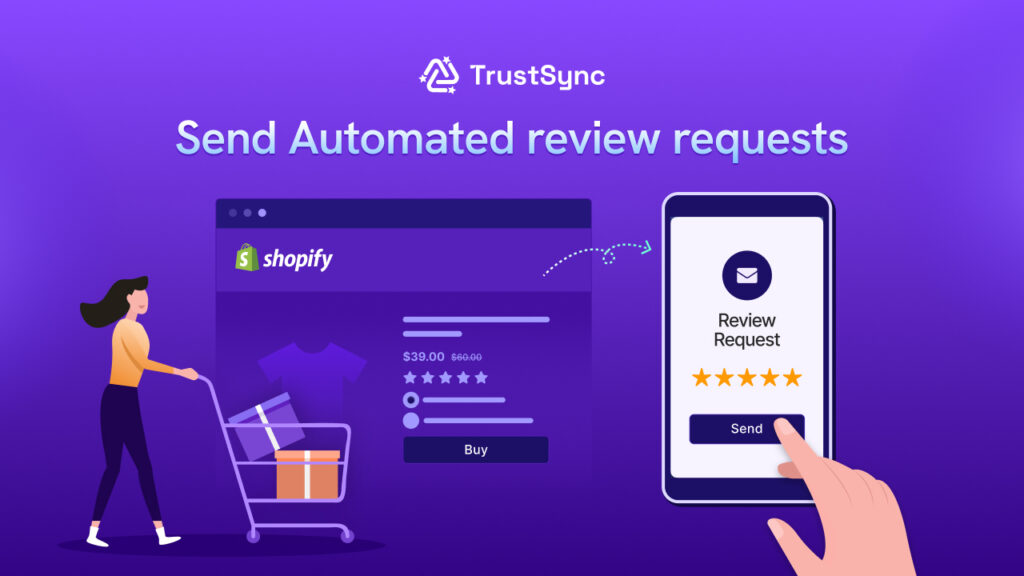Shopify product reviews have evolved from simple testimonials into powerful business assets. Today’s consumers no longer browse and buy on impulse. They research, compare and validate each purchase decision using real customer feedback spread across multiple platforms. Merchants using the right review strategies and tools like TrustSync have seen their review volume increase and boost, according to industry research.
In this comprehensive guide, you will discover how to request customers for Shopify product reviews effectively across different platforms, automate your outreach, and implement strategies top-performing stores use to strengthen trust and increase conversions.
What is the Modern Product Review Landscape?
Product reviews represent authentic customer feedback shared after purchasing and experiencing your products. These reviews appear across your Shopify store, Google My Business, Facebook, Trustpilot, Amazon and dozens of other trusted platforms, helping potential buyers make informed purchasing decisions based on real customer experiences rather than marketing claims.
The most valuable and impactful reviews include detailed text feedback, accurate star ratings, high-quality photos and even video testimonials. Verified reviews posted on platforms that shoppers already trust and regularly consult carry the most weight in influencing purchase decisions and building brand credibility.
How to Ask for Shopify Product Reviews: The Right Time, Channels and Approach
Asking for customer reviews may sound simple, but how, when, and where you make the request can significantly impact the outcome. A well-timed and well-worded review request not only increases the chance of receiving positive feedback but also helps build brand loyalty, enhance credibility and boost conversion rates.

Timing: When Is the Right Moment to Ask?
Timing your review request is crucial. Asking too early may catch the customer before they’ve experienced the product, while waiting too long might cause them to forget the details. The sweet spot typically lies between 3 to 7 days after product delivery—long enough for use, but soon enough to remain top-of-mind. Here are some context-based moments to consider:
📦 Post-delivery confirmation: Perfect for physical products.
💬 After a customer support interaction: Especially effective when an issue was resolved positively.
🔁 Repeat purchases or high AOV (Average Order Value) orders: Loyal or high-value customers are often willing to provide feedback.
📲 Post engagement (e.g., social media tags or mentions): Leverage the goodwill when they’ve already interacted with your brand.
Channels: Where Should You Ask?
Choosing the right channel to request reviews depends on your customer base and where they interact with your brand most. Instead of relying on a single method, consider a multichannel approach:
📧 Email: The Most Common and Effective Review Request Method
Email remains the go-to channel for requesting product reviews. It offers the flexibility to personalize messages based on customer data and behavior, allowing you to schedule review requests to arrive at the perfect moment after purchase. With well-crafted email sequences, you can gently remind customers multiple times, increasing the likelihood of receiving detailed and thoughtful feedback.
💬 SMS: Great for Mobile-First Users
SMS review requests are highly effective, especially for audiences who primarily use smartphones. Because text messages typically have high open rates. Sending review invitations via SMS can lead to faster and higher response rates. To maximize success, ensure the review form is fully optimized for mobile devices—simple, quick and easy to complete on the go.
📳 On-Site Prompts: Popups or Embedded Review Widgets
Using on-site prompts, such as popups or embedded review widgets on your thank-you pages or order history sections, can capture customer feedback right when engagement is high. These immediate and visible call-to-action encourage shoppers to leave reviews without having to check their inbox or messages, making the process more convenient and increasing participation.

🎁 Packaging Inserts: QR Codes or Review Reminders Inside Product Boxes
Including physical reminders like packaging inserts is a subtle yet effective way to prompt customers for reviews. These inserts can feature QR codes that link directly to the review page, providing a seamless offline-to-online transition. Customers appreciate these thoughtful touches and it serves as a gentle nudge while the product experience is still fresh in their minds.
📲 Social Media DMs or Stories: Perfect for Influencer-Style Brands
Social media platforms offer several features to request customer reviews, leveraging their interactive and personal nature to boost engagement, especially for influencer-style brands targeting younger demographics. Here are key features with examples, keeping it concise:
Stories with Swipe-Up Links (Instagram/Facebook): Brands can post Stories with a swipe-up link directing users to a review form or page (e.g., Google Reviews or a website). For example, an Instagram Story can feature a product demo with a “Swipe up to share your thoughts!” call-to-action, making it easy for engaged followers to leave feedback instantly.
Direct Messages (DMs): Platforms like Instagram, Twitter and Facebook allow brands to send personalized DMs requesting reviews. For instance, after a purchase, a brand can message a customer, “Loved your order? Share your experience here!” with a review link. This personal touch feels authentic and encourages responses, especially among younger audiences who value direct engagement.
Polls and Interactive Stickers in Stories: Instagram and Facebook Stories offer polls, question stickers, or sliders to prompt feedback. A brand might post a Story asking, “How much did you love our product? 😍” with a slider or a question sticker linking to a review page, making the process fun and interactive for younger users.
Approach: How to Request Customers for Shopify Product Reviews
Your message should be polite, personalized, and easy to act on. Avoid sounding robotic or desperate. A strong review request might thank the customer for their recent order, include the product name or image, and invite them to leave honest feedback. Here’s an example:
Hi Alex, thanks for your recent order! We’d love to hear what you think of your new EcoBlend Water Bottle. Your feedback helps us grow and helps fellow shoppers, too. Would you mind sharing a quick review?
The easier you make it for the customer to leave a review, the higher your success rate. Include a direct link to the review form and offer a gentle nudge like “It only takes 30 seconds!”
If you are targeting multiple platforms like Trustpilot, Google or Facebook, let the customer choose where to leave their feedback. This adds flexibility and improves review collection across all your touchpoints. You can also enhance effectiveness by:
- Personalizing the message with order details.
- Highlighting how the review helps the community.
- Offering a gentle incentive (e.g., loyalty points, discounts) that complies with review platform guidelines.
Should You Offer Incentives?
Offering incentives can significantly improve your review rate, but they must be used ethically and in line with platform policies. Small gestures like a 10% discount code for their next purchase, a loyalty point bonus or an entry into a monthly giveaway work well.
What you should not do is offer incentives in exchange for only positive reviews. This violates the policies of platforms like Google and Trustpilot and can damage your brand’s credibility. When offering an incentive, make it optional and clarify that you are asking for honest feedback—good or bad.
Bonus: TrustSync — A Simple Shopify App to Build Trust with Customer Review
When you run a Shopify store, you know how important it is to gain the trust of your customers. TrustSync is a simple app that helps you build that trust by making it easier to collect reviews from your buyers. You can automate the entire process of asking for feedback with TrustSync. As soon as an order is complete, the app sends review requests to your customers, saving you the time and hassle of doing it manually. Whether you need reviews on Google, Trustpilot, Facebook, Etsy or other platforms, TrustSync has you covered.
🌟 Review Apps like TrustSync: Offer Multiple Platform Choices
Social media platforms provide easy ways to request customer reviews, such as Instagram and Facebook Stories with swipe-up links to review forms, personalized DMs with review prompts, and interactive polls or question stickers. Shoppable Instagram posts can include review requests in captions, while pinned posts or bio links on Twitter and Instagram direct followers to review pages. Influencer collaborations on TikTok or Reels can also drive feedback by leveraging peer influence.
TrustSync simplifies this process by bringing all these platforms under one umbrella, allowing customers to choose their preferred review platform—Google, Trustpilot, Facebook or others- unified request. This flexibility boosts review collection rates and helps brands efficiently manage and display feedback across multiple channels.
Earn Trust, Convert More—Start Growing Your Customer Base Now!
Customer reviews are the foundation of every successful eCommerce store, especially for custom brands aiming to stand out. Platforms like Google, Yelp, Facebook, Trustpilot and Amazon help build credibility and boost conversions, each offering unique advantages from Google’s SEO power to Amazon’s unmatched visibility.
You can effortlessly collect, manage, and showcase reviews across all platforms in one place by TrustSync. Just choose one or two platforms to start, connect with TrustSync and watch your custom brand grow with the power of trusted customer feedback.
Is this blog helpful? Subscribe to our YouTube channel to stay updated with the latest tutorials, product reviews and Shopify solutions. Check out our website’s blog for the latest updates.








